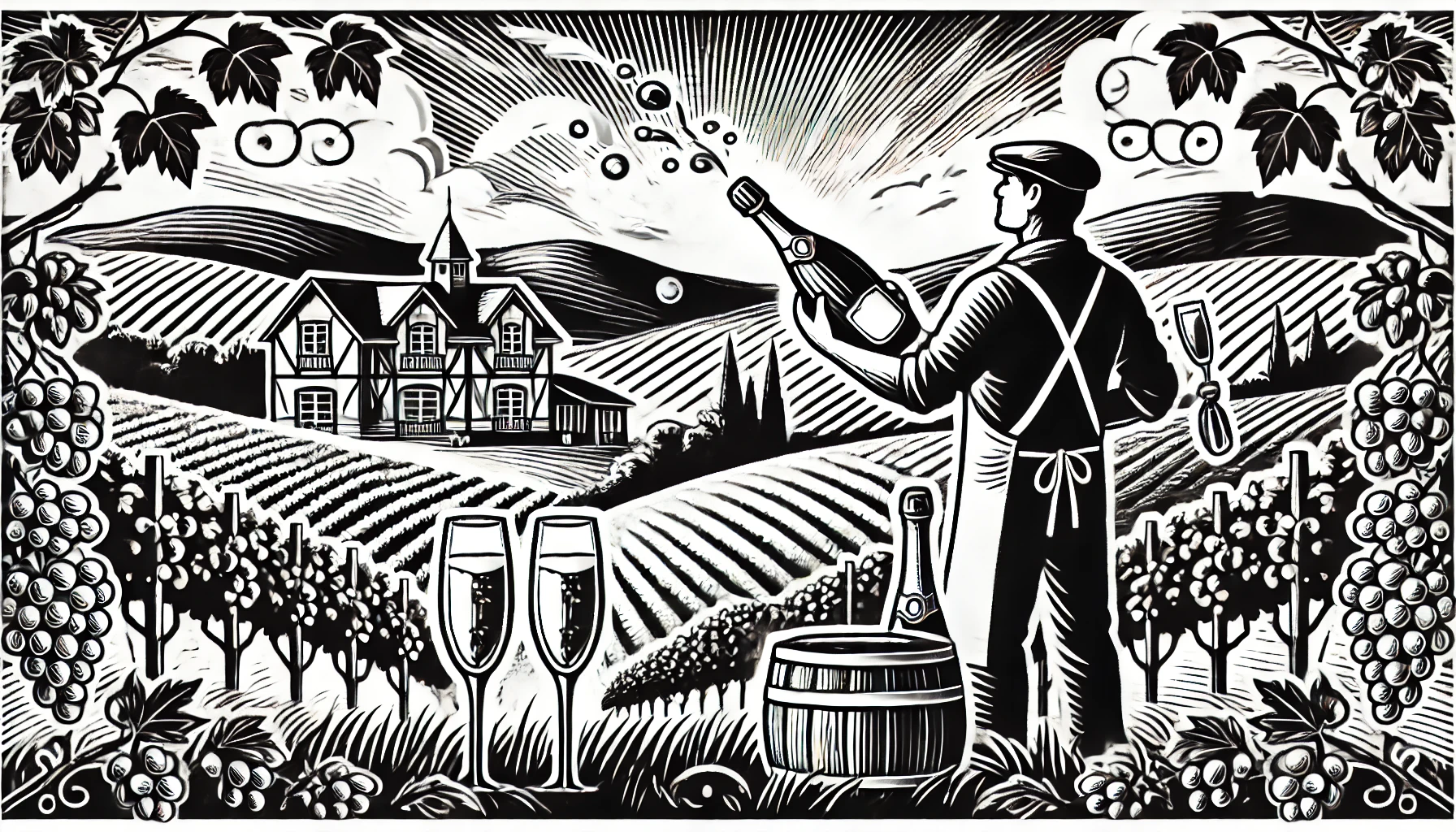
Champagne is a sparkling wine that comes exclusively from the Champagne region in northeastern France. Only wines produced in this specific area, following strict regulations, can bear the name “Champagne.” The winemaking process, known as the méthode champenoise or traditional method, involves a second fermentation occurring in the bottle. This technique creates the fine, persistent bubbles that are characteristic of Champagne.
Three primary grape varieties form the foundation of Champagne production: Chardonnay, Pinot Noir, and Pinot Meunier. Chardonnay contributes elegance, finesse, and acidity. Pinot Noir adds body, structure, and red fruit flavors, while Pinot Meunier offers fruitiness and roundness. Winemakers blend these grapes in various proportions to achieve the desired house style, though some Champagnes are made from a single grape variety, known as Blanc de Blancs (100% Chardonnay) or Blanc de Noirs (Pinot Noir and/or Pinot Meunier).
After the initial fermentation, the wine undergoes a secondary fermentation in the bottle by adding a mixture of yeast and sugar called the liqueur de tirage. This process generates carbon dioxide, creating the signature bubbles. The bottles are then aged on their lees (dead yeast cells) for a minimum period, which enhances complexity and imparts flavors like brioche, toast, and nuttiness.
Two crucial steps, riddling and disgorgement, follow the aging process. Riddling involves gradually turning and tilting the bottles to collect the sediment in the neck. Disgorgement removes this sediment, ensuring clarity in the final product. A dosage, or liqueur d’expédition, is added to adjust the sweetness level. It’s sweetness ranges from Brut Nature (no added sugar) to Doux (sweet), allowing for a variety of styles to suit different palates.
Champagne’s Flavor
Champagne’s flavor profile is complex and varies based on factors like grape blend, aging time, and sweetness level. Common tasting notes include citrus fruits, green apple, pear, almond, and toasty brioche. The wine’s high acidity and effervescence make it a versatile pairing with a wide range of foods. For example, ranging from oysters and sushi to fried chicken and even potato chips.
Champagne is synonymous with celebration, luxury, and elegance. Its unique production method, strict regional regulations, and storied history contribute to its esteemed reputation. Whether enjoyed at a wedding, a New Year’s Eve party, or a casual brunch, Champagne brings an element of sophistication and joy to any occasion.
Curious about more wine terms and insights? Visit our Wine Wiki section and explore the basic wine terms for expert definitions and tips!